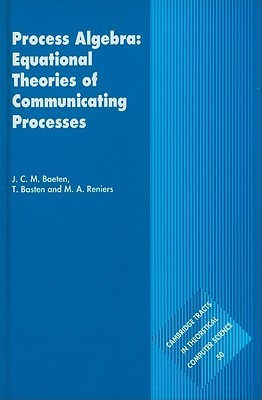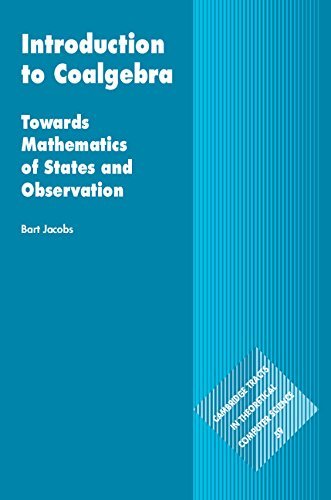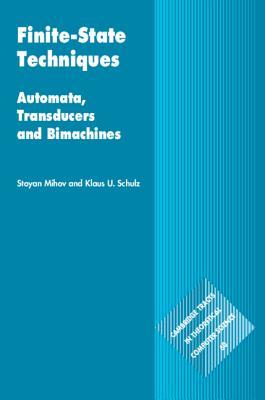


Books in series

Logic and Computation
Interactive Proof with Cambridge LCF
1987

Formal Semantics and Pragmatics for Natural Language Querying
1990

Applications of Process Algebra
1990

Process Algebra
1990

Updating Logical Databases
1990

Theoretical Foundations of VLSI Design
1990

A Unifying Framework for Structured Analysis and Design Models
An Approach Using Initial Algebra Semantics and Category Theory
1991

Design Theory and Computer Science
1991

Nets, Terms and Formulas
Three Views of Concurrent Processes and their Relationship
1991

Belief Revision
1992

Programs, Recursion and Unbounded Choice
1992

The Logic of Typed Feature Structures
With Applications to Unification Grammars, Logic Programs and Constraint Resolution
1992

Two-Level Functional Languages
1992

Predicate Transformer Semantics
1992

Action Semantics
1992

Formal Specification and Design
1992

Deductive and Declarative Programming
1992

The Clausal Theory of Types
1993

Algebraic Specification of Communication Protocols
1993

Higher Order Logic and Hardware Verification
1993

Metamathematics, Machines and Gödel's Proof
1994

Mathematical Theory of Domains
1994

Free Choice Petri Nets
1995

The Uncertain Reasoner's Companion
A Mathematical Perspective
1994

Epistemic Logic for Artifcl Intell
1995

Information Flow
The Logic of Distributed Systems
1997

Domains and Lambda-Calculi
1998

Data Refinement
Model-Oriented Proof Methods and their Comparison
1998

Hybrid Graph Theory and Network Analysis
1999

Rippling
Meta-Level Guidance for Mathematical Reasoning
2004

Process Algebra
Equational Theories of Communicating Processes (Cambridge Tracts in Theoretical Computer Science, Vol. 50)
2009

Advanced Topics in Bisimulation and Coinduction
2011

Nominal Sets
Names and Symmetry in Computer Science
2013

Introduction to Coalgebra
Towards Mathematics of States and Observation
2016

Finite-State Techniques
Automata, Transducers and Bimachines
2019
Authors

James Clifford is a historian and Professor in the History of Consciousness Department at the University of California, Santa Cruz. Clifford and Hayden White were among the first faculty directly appointed to the History of Consciousness Ph.D. program in 1978, which was originally the only graduate department at UC-Santa Cruz. The History of Consciousness department continues to be an intellectual center for innovative interdisciplinary and critical scholarship in the U.S. and abroad, largely due to Clifford and White's influence, as well as the work of other prominent faculty who were hired in the 1980’s. Clifford served as Chair to this department from 2004-2007. Clifford is the author of several widely cited and translated books, including The Predicament of Culture: Twentieth Century Ethnography, Literature and Art (1988) and Routes: Travel and Translation in the Late 20th Century (1997), as well as the editor of Writing Culture: the Poetics and Politics of Ethnography, with George Marcus (1986). Clifford's work has sparked controversy and critical debate in a number of disciplines, such as literature, art history and visual studies, and especially in cultural anthropology, as his literary critiques of written ethnography greatly contributed to the discipline’s important self-critical period of the 1980's and early 1990's. Clifford's dissertation research was conducted at Harvard University in History (1969-1977), and focused on anthropologist Maurice Leenhardt and Melanesia. However, because of his impact on the discipline of anthropology, Clifford is sometimes mistaken as an anthropologist with graduate training in cultural anthropology. Rather, Clifford's work in anthropology is usually critical and historical in nature, and does not often include fieldwork or extended research at a single field site. A geographical interest in Melanesia continues to influence Clifford's scholarship, and his work on issues related to indigeneity, as well as fields like globalization, museum studies, visual and performance studies, cultural studies, and translation, often as they relate to how the category of the indigenous is produced.

Alan Gibbons is an author of children's books and a Blue Peter Book Award. He currently lives in Liverpool, England, where he used to teach in a primary school. His father was a farm laborer, but was hurt in an accident when Alan was eight years old. The family had to move to Crewe, Cheshire where Alan experienced bullying for the first time. He began to write for his pupils as a teacher, but never tried to get any of his work published. Gibbons trained to be a teacher in his mid-thirties and starting writing short stories for his students. Later, he began to write professionally. In 2000, he won the Blue Peter Book Award in the category "The Book I Couldn't Put Down" category for Shadow of the Minotaur. He was a judge for the 2001 Blue Peter Book Awards. He was shortlisted for the Carnegie Medal in 2001 and 2003 and shortlisted twice for the Booktrust Teenage Prize. He has also won the Leicester Book of the Year, the Stockport Book Award, the Angus Book Award, the Catalyst Award, the Birmingham Chills Award, the Salford Young Adult Book Award and the Salford Librarians' Special Award.